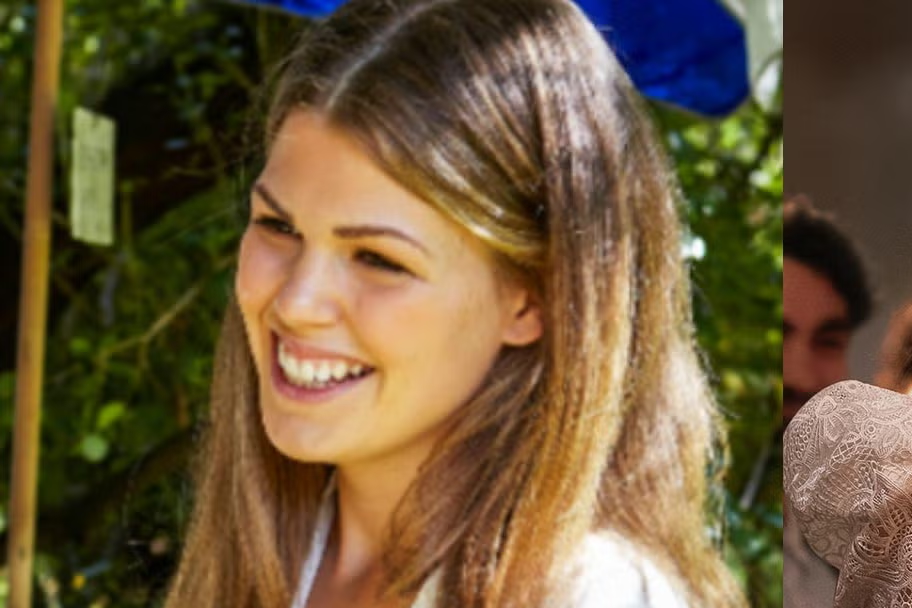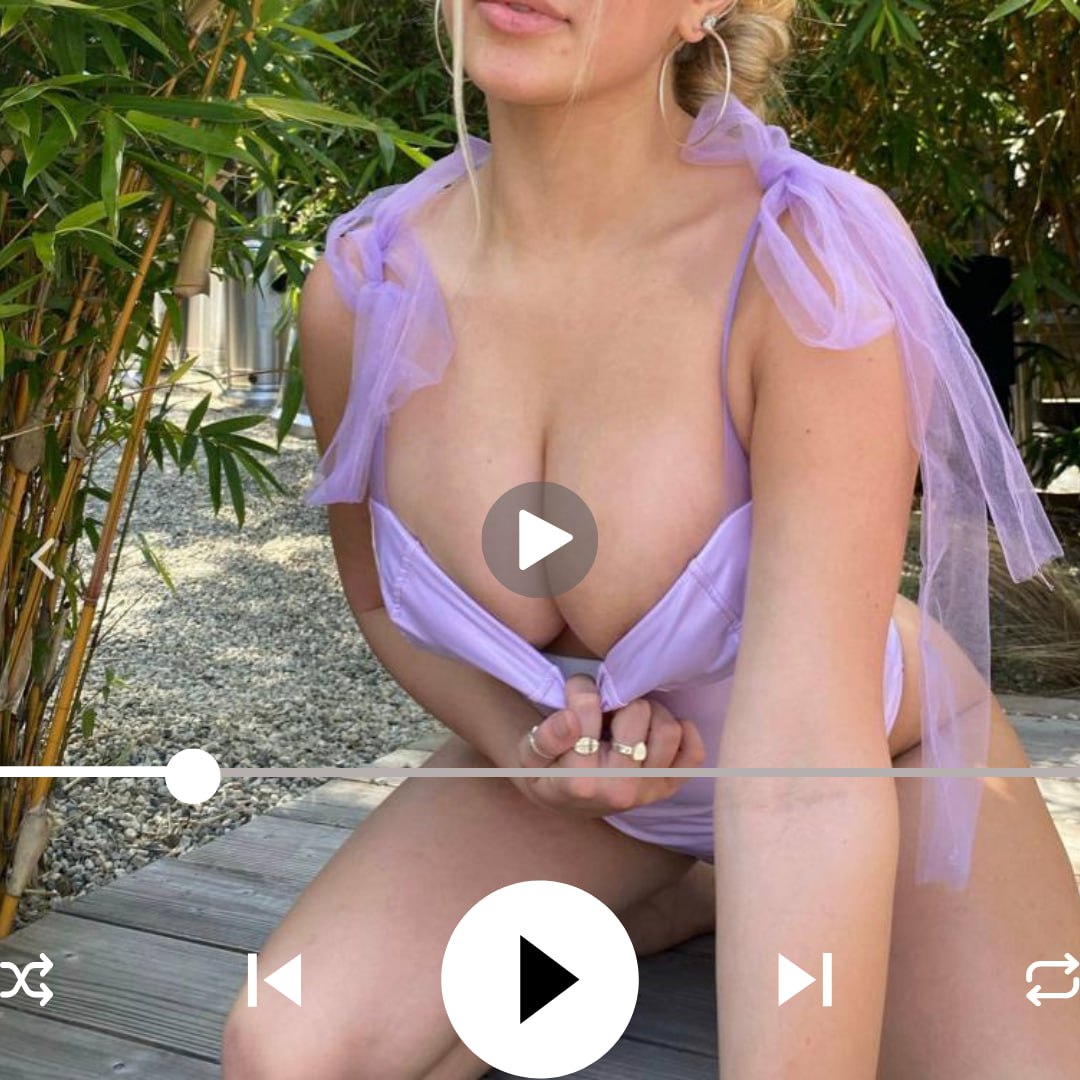Internet con artists have been a bane of modern life, but, in their favor, they do make for excellent fact-based dramas, from WeCrashed (about WeWork) to Inventing Anna. Now comes Apple Cider Vinegar, a self-described “true-ish story based on a lie” that documents the rise and fall of Australian wellness blogger-cum-scammer Belle Gibson, who built an influencer mini-empire on the back of claims that clean eating enabled her to live a normal life despite having a terminal brain tumor—which, of course, she didn’t.
There are many similarities between Gibson and Anna Delvey: Both were attractive young women from modest backgrounds (which they did their best to obscure), who created glamorous, successful fantasy personas for themselves, and, with a good deal of business acumen and determination—plus being expert manipulators and liars—brought them into being. Even more than money, both women seem to have been in it for the validation that they were special and admired.
But where Delvey’s activities defrauded largely people with substantial wealth, Gibson did not deprive her followers of their money so much as threaten their health: Many who believed her were cancer patients for whom the clock was ticking and so did not have the luxury of wasting time on dubious nutritional “cures.”
The series is as much about the difficulty of determining the truth in an age of unregulated social media, a landscape where a poster’s opinions count for as much as a research expert’s evidence and the beliefs of people with no medical expertise are given as much credibility as an entire peer review board. Consequently, the story is full of unreliable narrators. Nevertheless, we try to sort out what’s fact and what’s fiction in Apple Cider Vinegar.
In the series, one of Belle Gibson’s followers is a young woman, Lucy, who is diagnosed with breast cancer. Her doctor warns her to “resist the impulse to go on forums,” but miserable due to chemotherapy, she does so. There, Lucy discovers Belle and realizes she knows the wellness blogger from the vegan café where she works. She finds Belle’s story of feeling healthy despite living with a Stage 4 glioblastoma (an aggressive malignant brain tumor) and her message—“Change your life, one meal at a time”—really resonates. Against her doctor’s advice, she decides to stop chemo and instead adopt Belle’s diet-based regime.
Around this time, Lucy’s boyfriend, Justin, a journalist on the investigations team of the Age newspaper, gets a tipoff from Belle’s former manager that Belle’s cancer diagnosis is fake. He starts digging into Belle’s past, and what he finds convinces him Lucy should not be taking Belle’s advice. But she rejects his warnings and in fact dives deeper into the holistic approach, visiting a shamanistic retreat in the Amazon. Naturally, this drives a wedge between them.
Justin and a colleague, Sean, realize they can’t prove Belle (Kaitlyn Dever) has been faking her illness without access to her confidential medical records, but they can prove she has misappropriated funds allegedly raised to benefit various charities. When their article appears, it bursts Belle’s bubble of celebrity as the truth comes out. Lucy returns from the retreat ready to resume chemo with Justin’s support.
Gibson was indeed exposed by a journalist whose wife had cancer, but it wasn’t Justin, who is a composite character. The first journalist to become suspicious was a reporter for the Australian’s weekend magazine called Richard Guilliatt. Guilliatt’s wife, Susan, had been treated for breast cancer in 2005, and so he was familiar with the range of alternative “cures” being peddled on the internet. “I had been writing about the wellness phenomenon since 2012,” he told the BBC. “And then I came across Belle Gibson’s claims online. Because I’d written about the wellness industry and had interviewed a range of cancer specialists, I just was immediately suspicious about her claim about this brain tumor. You don’t live with brain cancer for five years.” Guilliatt published a story in which several of these cancer specialists (whom, of course, Gibson’s online supporters dismissed as being in the pocket of Big Pharma) disputed the efficacy of her remedies.
At the same time, two investigative journalists on the Age newspaper, Beau Donelly and Nick Toscano, started looking into Gibson’s claims after being tipped off by no fewer than six people in her inner circle that she didn’t have brain cancer. As depicted in the show, they didn’t have access to her private medical records, so they switched their focus to the missing charity payments. After Donelly and Toscano published their findings in 2015, unleashing a torrent of negative publicity, Gibson met with Guilliatt in a café to tell her side of the story (in the show, she agrees to meet Justin for an interview in a café but never shows up).
The previous year, sensing her influence was waning, Gibson had doubled down, claiming her cancer had metastasized to her blood, spleen, uterus, and liver. It gained her sympathy but ironically made more people question the efficacy of her wellness solutions. At the café, Gibson told Guilliatt that she had doubts about the doctor who had diagnosed the other four cancers. “I was just completely stunned that she would backtrack from this extraordinary claim that she’d only made seven months earlier,” the journalist said, adding that after the interview, the ever-manipulative Gibson called to remind him that people had been driven to suicide by damaging press stories.
With her online organic baby clothes business failing to thrive, Belle is looking around for another enterprise. She comes across a blog by Milla Blake, a young woman who was living her ideal life until she was diagnosed with sarcomas on her arm and told she will need an amputation and chemo. She rejected this in favor of a very strict juice-based diet routine called the Hirsch program and, after, her tumors disappear, becomes determined to spread the gospel of natural self-healing and positive thinking.
Belle, who believes herself to be a close friend of Milla’s based purely on social media correspondence, goes to her book launch in 2012 and, inspired by the adoring crowds the blogger attracts, decides to become a wellness coach, creating a food diary app and devising clean-eating recipes. Soon Belle’s “Whole Pantry” website is attracting thousands of hits, and in 2013 Belle and Milla are up against each other for a Cosmopolitan magazine “Fun Fearless Female” award. In a sort of wellness variation on All About Eve, Belle wins.
Lacking Belle’s entrepreneurial flair, not to mention her willingness to lie, Milla attempts to monetize her brand by physically hawking organic juices to small retailers, while Belle’s Whole Pantry is picked up by Apple to become one of the first health apps available on the Apple Watch. Then the tumors on Milla’s arm reappear. Even worse, her mother is diagnosed with bowel cancer and, out of loyalty to her daughter, foregoes chemo for the juice-and-enema cure. However, it only makes her worse and hastens her death. Milla’s own cancer has metastasized, and although she is finally willing to get the amputation, it is too late. Three months later, Milla dies. Even though she is not invited and the deceased despised her, Belle turns up at the funeral and tries to make it all about her by weeping theatrically throughout.
Milla is based largely on a woman named Jess Ainscough, one of the first wellness influencers who was indeed diagnosed with sarcomas on her arm at 23, and in 2008 decided to forgo the recommended amputation in favor of a cleansing regime called the Gerson regimen, documenting her progress online and becoming known as the “Wellness Warrior.” The Gerson regimen dates back to the 1960s and claims an all-vegetarian diet—along with a strict (13 times a day) schedule of drinking fruit and vegetable juices and having coffee enemas (at least two a day)—can cure a variety of serious ailments.
Ainscough convinced her mother, Sharyn, who had been diagnosed with breast cancer in 2011, to follow the Gerson therapy path, with tragic results. In 2013, Sharyn died, 14 months after she was first diagnosed. Ainscough herself died in 2015, age 29. According to Donelly and Toscano’s book The Woman Who Fooled the World, Gibson did crash the funeral and called attention to herself with theatrical “sobbing.”
In the series, Belle’s relationship with her mother, Natalie Dal-Bello (Essie Davis), is shown to be prickly. Natalie is depicted as a bit of a nightmare: emotionally manipulative, totally self-absorbed, and given to playing the victim (although she does actually have multiple sclerosis ), consistently putting her daughter down and telling embarrassing stories about her—like that Belle faked a heart attack when she was dumped by her first boyfriend—while still hoping to benefit financially from Belle’s fame. Belle, meanwhile, claims that her mother let her sleep in dirty sheets, that she never knew her father, and that that she ran away from home when she was 12.
The real Gibson made similar claims in an interview with the Australian Women’s Weekly magazine, in which she said, “When I started school, my mum went, ‘My daughter is grown up now.’ All of a sudden, I was walking to school on my own, making school lunches, and cleaning the house every day,” she said. “It was my responsibility to do grocery shopping, do the washing, arrange medical appointments, and pick up my brother. I didn’t have any toys.”
However, in a subsequent interview with the same publication, Natalie gave her side of the story, asserting, “What a lot of rubbish. Belle never cared for me, her brother is not autistic, and she’s barely done a minute’s housework in her life. I’ve practically worked myself into an early grave to give that girl everything she wanted in life.”
Interviewed by the BBC in 2022, her brother Nick confirmed that he had “no idea why she’d describe me as autistic. I don’t have autism at all. Even as a kid she used to call me ‘retard.’ ” He also claimed that when Natalie was in a hospice shortly before her death in 2017, Belle turned up at the family home and made off with her mother’s jewelry.
As for Gibson’s alleged heart attack, when Richard Guilliatt started digging into Gibson’s past, he discovered she had wiped all traces of herself from the internet prior to 2014. However, he did find some pictures of her as a 17-year-old skater girl on a 2009 skateboarding forum, along with a post in which she claimed to be writing in real time from the hospital where she was recovering from open-heart surgery having died on the table and been resuscitated (three times). For a documentary made by Britain’s ITV channel called Instagram’s Worst Con Artist, Guilliatt interviewed two former friends of Gibson’s, who both described her as fun, outgoing, and confident until mid-2009, at which point she started to “post crazy stories” on the forum about her heart surgery. And in the BBC documentary, an anonymous school friend recalls, “You knew you couldn’t trust her. She would come to class in an arm sling or claim to be a test tube baby. We all kind of went ‘OK, sure, Belle.’ ”
The series shows Belle taking her son Oliver to a playground and striking up a conversation with Fiona Cross, a woman whose 8-year-old son Hunter is suffering from a rare form of brain cancer. Belle offers to help the family raise the 60,000 pound deposit they need to send him for pioneering treatment abroad, promising a share of her app sales will go to Hunter. Before too long, she tells Fiona that she has raised almost all the money, and Fiona contacts the doctor. However, when Justin and Sean’s article appears, alleging not only has the family not received any money but also that Whole Pantry is not even a registered fundraiser, Fiona tries to get clarification from Belle. Belle blocks her number, and Hunter’s surgery is canceled despite his health deteriorating.
In actuality, Gibson, 23, befriended a woman named Penne Schwarz on social media in 2013, after seeing Penne’s posts about her 7-year-old son Joshua’s brain tumor, which was caused by a rare genetic disorder with a prognosis of four months to live. Gibson never promised to raise money for Joshua’s treatment, and in fact, the Schwarz family said not only had they not received any donations from Gibson, they didn’t even know about the fundraiser. They did, however, know that Gibson took a great interest in Joshua. “She’d always ask heaps of questions about Joshy’s cancer and treatments,” Schwarz told Australian paper the Herald Sun. “Was it to give her more credibility? We can’t help but think, ‘Did she use us to get in the mind of Joshua?’ ”
In her Whole Pantry cookbook, Gibson referred to the family as her “great friends” and called Joshua “the second little man after my own heart” with whom she shares an “unintimidated friendship with our ‘brain bugs,’ ” while offering his mother “a printed invitation to my love and support.” Schwarz said that before Toscano and Donelly’s article appeared, she had no knowledge of being mentioned in the cookbook and had not given Gibson her consent to do so. When she called Gibson for clarification, the influencer was evasive. Even though the family knew nothing of Gibson’s supposed fundraising efforts on their behalf, after the story came out, they faced suggestions they were in on the con, with the online trolls targeting her son’s Facebook fundraising page and medical blogs “saying the most horrendous things,” Schwarz said at the time.
This was devastating because the family relied on public donations, along with the sale of their house, to help fund Joshua’s treatment, which was limited to experimental techniques. Joshua died in 2017.
In 2014, Gibson claimed 300,000 Australian dollars had already been given to charity, but then in 2016, the Age article showed this to be false. In 2017, Australian Federal Court Judge Debbie Mortimer ordered Gibson to pay a penalty of $90,000 for her false claims that she would make donations for the sale of her app; $90,000 for false claims her company would make charity donations; $50,000 for false claims that following her app launch she would donate to charity; and $150,000 for false claims that she would make donations to the Schwartz family for Joshua’s treatment.
Get the best of movies, TV, books, music, and more.




